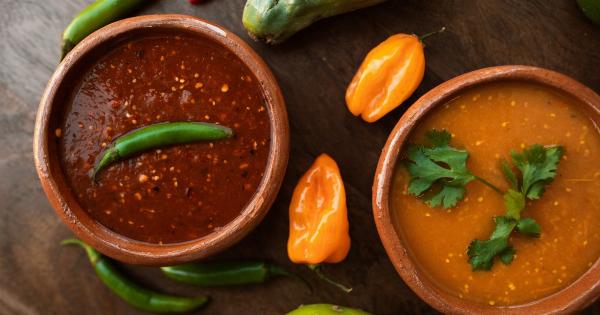When it comes to road trips or long journeys, one cannot ignore the temptation of stopping at rest stops and indulging in some delicious junk food.
These pit stops offer a wide assortment of options ranging from greasy burgers to sugary snacks, all designed to satisfy our cravings. However, have you ever wondered why many people find it hard to resist the allure of junk food at these rest stops? The answer lies in the psychology behind our decision-making process when it comes to food choices.
The Influence of Comfort and Familiarity
Rest stops are often associated with familiarity and comfort. They provide a break from the tiresome journey, allowing travelers to rejuvenate and relax. In such settings, people tend to gravitate towards food that brings them a sense of comfort.
Junk food, with its high levels of fat, sugar, and salt, triggers the brain’s pleasure centers, providing a temporary escape from the monotony of the road. The familiarity and comfort provided by these indulgent foods make them appealing choices in rest stops.
The Power of Advertising
Rest stops are not only a place to refuel the vehicle but also serve as a platform for advertisers to promote their products.
Countless billboards, signs, and digital screens bombard travelers with enticing visuals and attractive descriptions of mouthwatering junk food options. These advertisements are strategically placed to capture the attention of weary travelers, influencing their decision-making and tempting them to sample the advertised food items.
The power of advertising cannot be underestimated when it comes to our food choices at rest stops.
Instant Gratification and Convenience
Junk food at rest stops offers instant gratification – the ability to satisfy our hunger and cravings immediately.
These foods are designed to be quickly prepared and easily consumed, allowing travelers to get back on the road without wasting too much time. The speed of service and the convenience of these options make them highly appealing, especially for those who are in a hurry or looking for a convenient and quick meal.
Our desire for immediate satisfaction plays a significant role in our choice of junk food at rest stops.
The Influence of Stress and Fatigue
Long journeys can be physically and mentally exhausting, leading to heightened stress levels and fatigue. Studies have shown that stress and tiredness can impact our food choices, leading to a preference for high-calorie and unhealthy options.
Junk food, with its comfort-inducing properties, serves as a source of temporary relief from stress and fatigue. The combination of stress and fatigue can weaken our self-control, making it harder to resist the temptation of junk food at rest stops.
Availability and Accessibility
Another crucial factor contributing to the prevalence of junk food consumption at rest stops is the sheer availability and accessibility of such options.
Rest stops are typically loaded with vending machines, fast-food chains, and convenience stores, all stocked with a vast selection of junk food. The easy availability of these items makes them the most visible and convenient choice for many travelers. With limited healthy food options, the accessibility of junk food becomes a significant driver behind our decision to indulge.
The Social Aspect
Rest stops often attract large groups of people traveling together, whether it be families, friends, or colleagues. In such a social setting, food becomes a means of bonding and enjoyment.
Junk food is often a shared experience, with people indulging in snacks, fast food, and sugary treats together. The social aspect of junk food consumption contributes to its popularity at rest stops, as people are more likely to be influenced by the choices and behaviors of those around them.
Emotional Eating and Nostalgia
Emotional eating is another psychological factor that comes into play at rest stops. People often turn to food as a way of coping with negative emotions or as a source of comfort.
Rest stops and road trips can trigger a sense of nostalgia or evoke memories of past trips, which further intensifies the desire for familiar and indulgent foods. Consequently, junk food becomes a means of emotional regulation and a way to relive pleasant memories associated with previous journeys.
Cultural Influences
Cultural influences also play a role in our food choices at rest stops. Different regions or countries often offer their own unique types of junk food, which can hold cultural significance or be considered a local specialty.
Travelers may be tempted to try these regional delicacies or indulge in foods that they associate with a particular culture or place. This cultural factor adds another layer to the psychology behind choosing junk food at rest stops.
The Appeal of Novelty and Limited Availability
Some rest stops are known for offering limited-edition or exclusive food items that cannot be found elsewhere.
The appeal of novelty and scarcity can trigger our desire to try something unique or rare, leading us to opt for the junk food options available. The idea of experiencing a one-of-a-kind treat adds excitement to the overall journey, making it harder to resist the allure of these special offerings.
Conclusion
The psychology behind choosing junk food at rest stops is influenced by various factors, including comfort, familiarity, advertising, convenience, stress, availability, social influence, emotional eating, cultural factors, novelty, and limited availability. These elements combine to create a powerful pull towards indulgent and unhealthy food options. Understanding the psychological drivers behind our food choices is crucial if we want to make healthier decisions while on the road.































